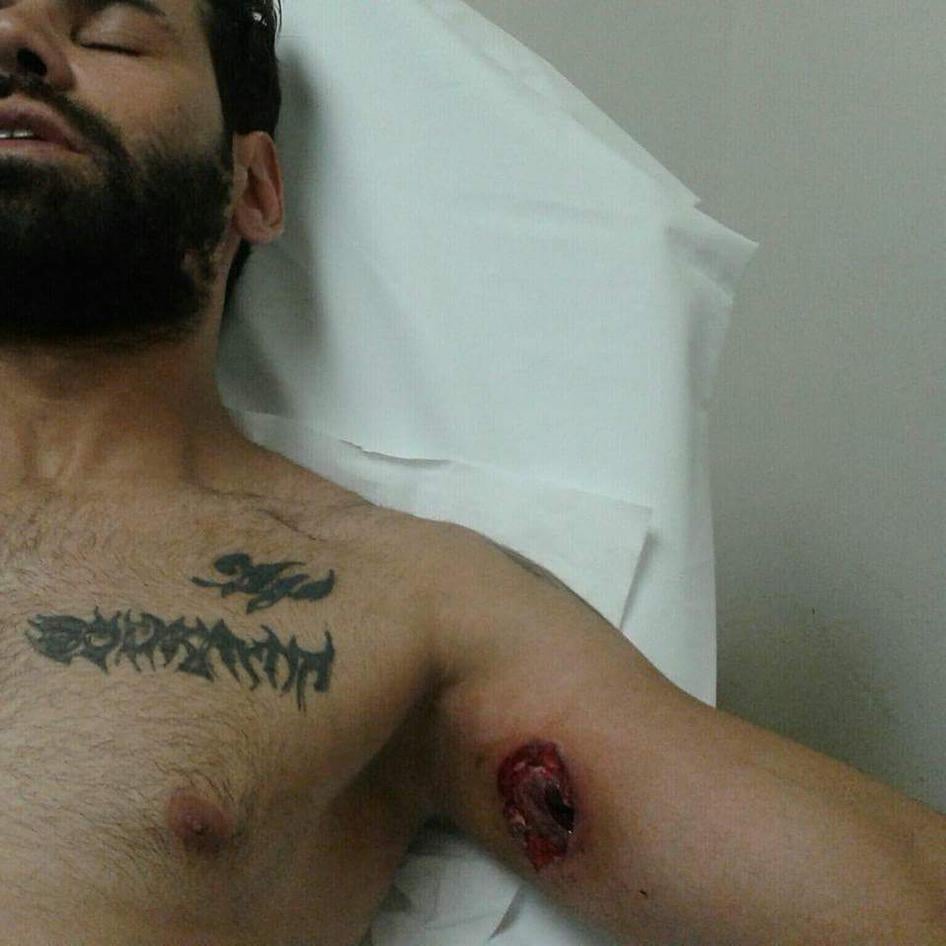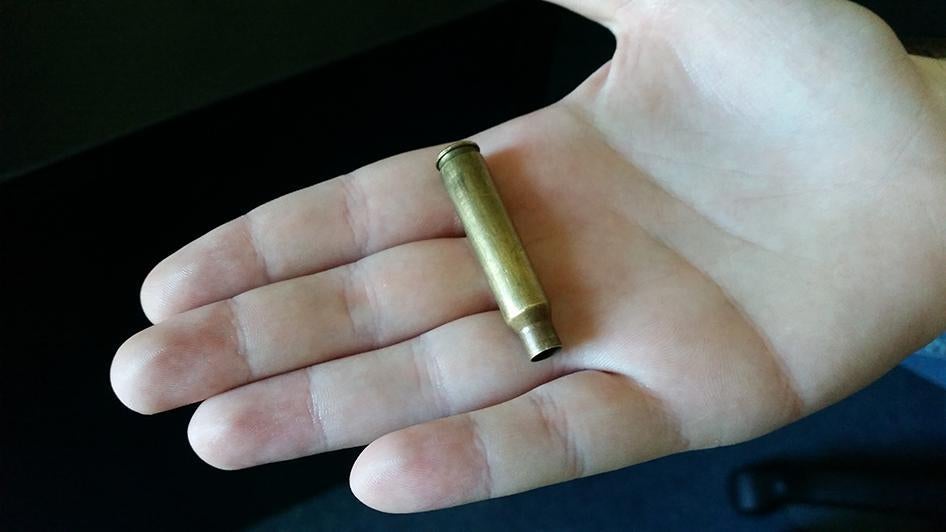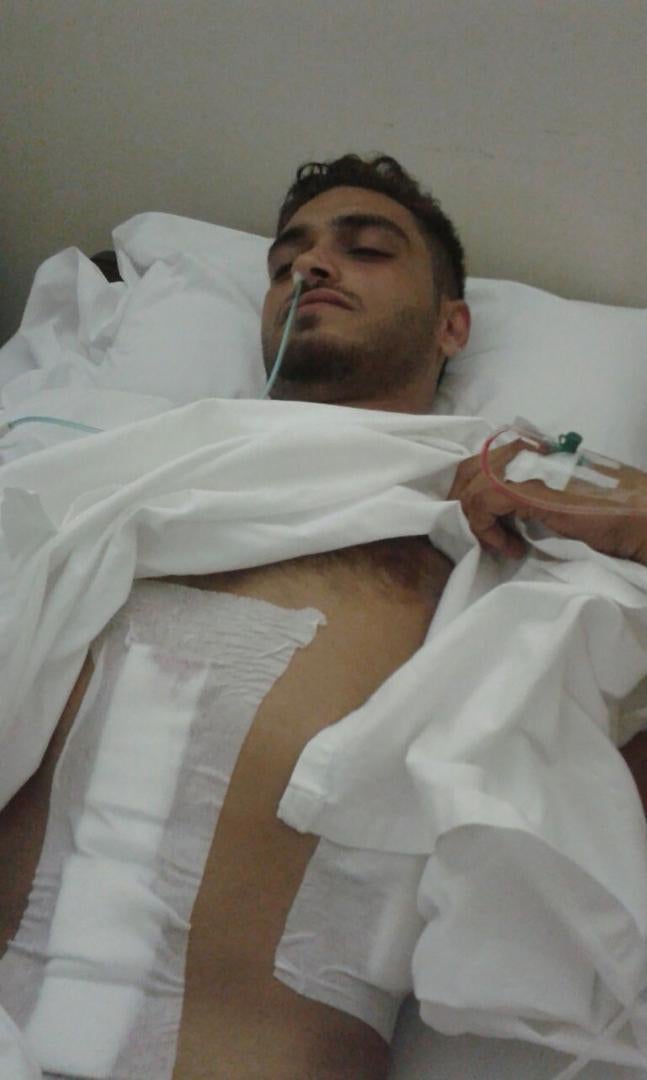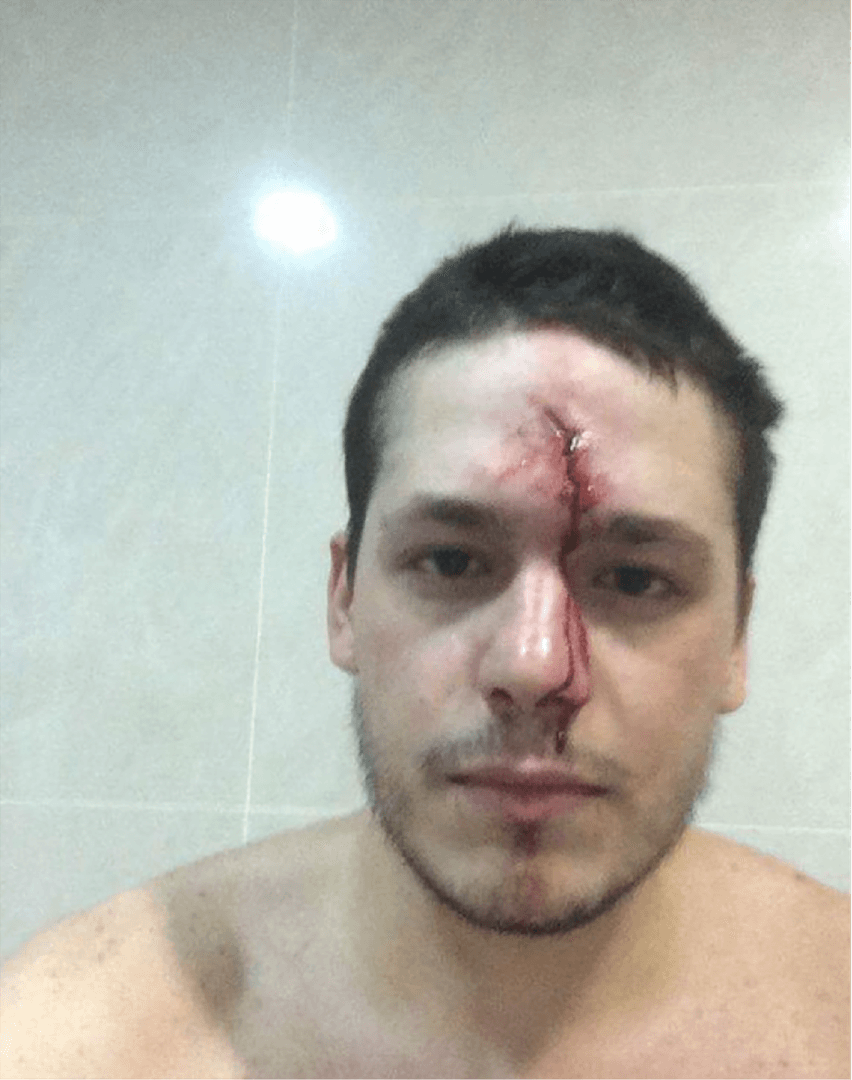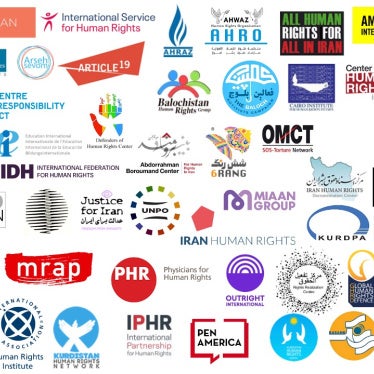(Beirut) – Lebanese authorities should take immediate measures to ensure that there is no repeat of violence against protestors in downtown Beirut and that perpetrators of violent attacks are held accountable, Human Rights Watch said today.
Lebanese security personnel used rubber bullets, tear gas canisters, water cannons, butts of rifles, and batons to control protesters on August 22 and 23 in downtown Beirut. Security forces also fired live ammunition, reportedly in the air, to disperse protesters.
On August 23, Lebanon’s state prosecutor Samir Hammoud tasked military prosecutor judge Sakr Sakr, who under Lebanese law has jurisdiction over crimes committed by the security forces, to investigate the violence. Lebanese authorities should ensure that the investigation into violence by security forces is independent, effective, and transparent, and that security personnel responsible for unlawful use of force are held accountable.
“Lebanon has an unfortunate habit of opening investigations into violence by security forces but never concluding them,” said Nadim Houry, deputy Middle East director at Human Rights Watch. “Lebanon’s judiciary needs to show that it can rise to the occasion and hold those responsible for excessive violence accountable.”
Human Rights Watch staff monitored part of the protests on August 22 and 23 and interviewed 12 witnesses, including 6 wounded protesters. Galvanized by police violence used against peaceful protesters earlier in the week, an estimated 5,000 demonstrators poured into Riad al-Solh square on August 22, protesting political and economic corruption and the state of public services in Lebanon. Protests organized by the “You Stink” movement and other groups urging sustainable solutions to the waste crisis began in July.
The August 22 protest began peacefully at 6 p.m. with a significant number of families taking part. The police had set up barricades to prevent the protesters from reaching the seat of government at the Grand Serail as well as Parliament at Nejmeh Square. At around 7 p.m., tension increased as protesters tried to get closer to those buildings. Witnesses said that some protesters threw firecrackers and water bottles over the police barrier near the Grand Serail. Another group of protesters tried to reach Nejmeh Square, where parliament is located, but were confronted by the Lebanese Armed Forces (LAF) stationed nearby and an Internal Security Force (ISF) unit assigned to protect parliament.
The standoff with the security forces quickly escalated as security forces appeared to fire live ammunition in the air to disperse the protesters, who responded by throwing bottles and sticks at them. Human Rights Watch researchers later collected 5.56mm bullet casing cartridges – used in the M16 rifles issued to Lebanese security forces – at the site. Several of those interviewed also showed Human Rights Watch 5.56mm cartridges they had collected. Protesters and activists shared images of live bullet shells on social media.
Violence also erupted near the Grand Serail, where members of the riot police and other units from the Internal Security Forces used tear gas, water cannons, rubber bullets, and apparent live fire in the air to forcibly disperse protesters from Riad al-Solh square. The events were caught on camera by TV stations broadcasting live from the protests. Clashes between security forces and groups of protesters throwing rocks and sticks continued until late at night with heavy use of gas canisters, rubber bullets, and water cannons.
In three cases Human Rights Watch documented, wounded protesters or their friends said that security personnel shot rubber bullets at them from close range, resulting in severe injuries that required hospitalization. Three protesters said they suffered minor injuries from rubber bullets that hit them in their legs, arms, or stomachs as they tried to flee. Another three protesters described being pursued and beaten by baton-wielding policemen even though they were leaving the protest area and had not taken part in any violent act. Many experienced mild suffocation problems from the dense teargas. A female activist helping to organize the protests said that a police officer beat her in the head.
According to the Lebanese Red Cross, 75 protesters were injured on August 22, 15 of whom were hospitalized for their wounds. The Internal Security Forces said that 35 policemen were also injured that night. The state prosecutor told the newspaper Al-Joumhouria that investigations showed “that no one was wounded with live bullets and the injuries that occurred at the first day of protests [August 22] were due to the use of rubber bullets.”
The Skeyes Center for Media and Cultural Freedom, which monitors freedom of the press, documented nine cases of violent attacks against journalists on August 22 and 23, identifying most of the attackers as security personnel. Nada Andraos, a journalist from LBC TV, a local station, told Human Rights Watch that ISF members hit her and her photographer with a stick and sprayed them with a water hose. Beating journalists covering a protest is unlawful and an indefensible attack on press freedom, Human Rights Watch said.
“Policing demonstrations can be challenging, but what happened on Saturday was clearly an unjustified excessive use of force,” Houry said. “The police seemed more interested in teaching protesters a lesson than in maintaining public order.”
On August 23, new protests took place in downtown Beirut, with many protesters calling for the resignation of the government and accountability for the violence against the protesters. Groups of protesters threw rocks at the police and tried to forcibly remove barricades set up by the security forces. Security forces responded with teargas, rubber bullets, and water cannons. Some protesters also set fire to trashcans, and destroyed public property such as traffic lights and parking meters. The ISF reported that 99 people were wounded, including protesters and security officers, and that 32 people were detained. Clashes between protesters and security forces erupted again on August 25.
In policing demonstrations, security forces, including the military, should abide by the UN Basic Principles on the Use of Force and Firearms by Law Enforcement Officials, Human Rights Watch said. The principles call upon law enforcement officials to apply nonviolent means before resorting to force, to limit the use of force in proportion to the seriousness of the offense, and to use lethal force only when strictly unavoidable to protect life. The Internal Security Forces adopted a code of conduct in 2011 that stipulates that “Police members will not resort to the use of force unless it is necessary, proportionate and after exhausting all possible non-violent means, within the minimum extent needed to accomplish the mission.”
Interior Minister Nouhad Machnouq announced on twitter on August 23 that everyone who gave orders to shoot, and every police officer who shot at protesters will be held accountable. The state prosecutor told local media on August 26 that investigations are ongoing and surveillance cameras are being used to identify the troublemakers who started riots. The prosecutor said that members of the security forces were also questioned.
Impunity for violence by security forces is a recurring problem in Lebanon. Investigations into previous incidents of excessive, and in some cases lethal, violence against protesters, if initiated, have not been concluded. All public information available indicates that Lebanon never investigated incidents in which security forces, including the army, used force against protesters, such as the violent dispersal of Palestinian protesters in Northern Lebanon on June 29, 2007, which left two Palestinians dead and at least 28 injured; and the violent dispersal of protesters in Hay al-Sellom, a poor neighborhood in Beirut, on May 27, 2004, which killed five protesters and wounded dozens.
“It’s long past the time for Lebanon to get serious about holding its security forces accountable,” Houry said. “The authorities need to deliver on their promises of effective investigations and accountability, or the laws that are supposed to protect Lebanese from abuses and ensure respect for basic rights will have no deterrent effect.”
Accounts From Witnesses, August 22
Elias, protester:
Elias said that he started running away from Riad al-Solh square towards a shopping area called the Beirut Souks when ISF units fired teargas canisters to disperse protesters in front of the Grand Serail. He said that they appeared to be directly targeting protesters with the canisters. “But I didn’t just want to run away,” he said. “I turned back and gave the peace sign to the police officers and started to march slowly toward the front lines with my hands over my head indicating for them not to shoot. Then, I saw someone get hit and I rushed over to them. Then the security forces fired an object directly at me – at my head.” He does not know what hit him. He was rushed to the hospital where he received about a dozen stitches.
Abdullah, protester:
Abdullah said he was watching TV on the evening of August 22 when he decided to join the protest to support his fellow countrymen and voice his frustration with the lack of adequate public services and high unemployment rates. He arrived at the Azarieh building, which leads down toward Riad al-Solh square. “Within 10 minutes of arriving to the area, I realized how out of control things had gotten,” he said. “I saw a police officer crouch behind a car aiming at protesters. Before I knew it, I heard a loud sound. I was hit and fell down. I don’t know what he fired at me but it left a gaping hole in my arm. Others rushed to my side and I was transported to Rizk Hospital for surgery.” He said his injuries have kept him from riding the moped he uses for his job as a deliveryman. He fears that he will be fired. “The hospital staff said that the Health Ministry will cover our hospital costs, but who will compensate me to cover my living expenses while I am out of work?”
Ahmad, protester:
Ahmad said that policemen were shooting riot guns and rubber bullets from close range, directly toward him and other protesters. The police charged and started firing teargas canisters and beating him and the others with sticks in Beirut Souks, he said. “I saw a woman in the middle of the road who was suffocating from the teargas bombs,” he said. “I yelled out don’t shoot and tried to run to her to help her – instead I got shot in my stomach. He said that the Lebanese Red Cross immediately took him to the emergency room at Hotel Dieu. “The doctors cut me open from my chest to his stomach, making sure that my vital organs had not been perforated before they sewed me up,” he said
Other protesters:
A protester who asked not to be named said that his friend was shot in the leg by a rubber bullet at close range and was rushed to Hotel Dieu hospital. The friend who was injured provided Human Rights Watch with multiple pictures of his leg wounds and the rubber bullet that was extracted from his leg at the hospital, but asked not to have the photos or his name made public because he did not want his family to know that he had been participating in protests.
Another male protester who preferred not to be named said that as he ran away from Riad al-Solh square toward Nejmeh square, he saw an ISF officer using a stick to beat a woman who appeared to be fleeing the chaos and had not been attacking anyone. He said he saw the police unit guarding parliament beating other protesters with sticks and firing bullets into the air.
Another protester said that he and some of the organizers tried to form a buffer zone between the security personnel and protesters to calm things down while security forces started to fire rounds of live ammunition into the air. He said that he and his friends pleaded with the officers to stop using live ammunition and that in response an officer hit him in his back with the butt of his rifle.
